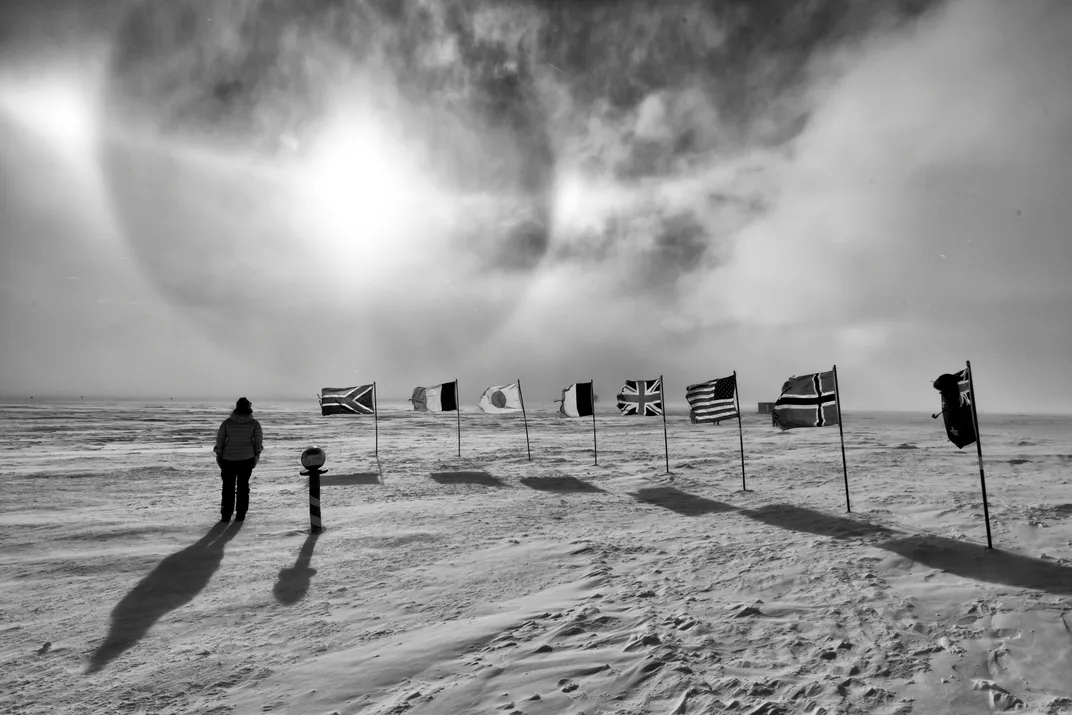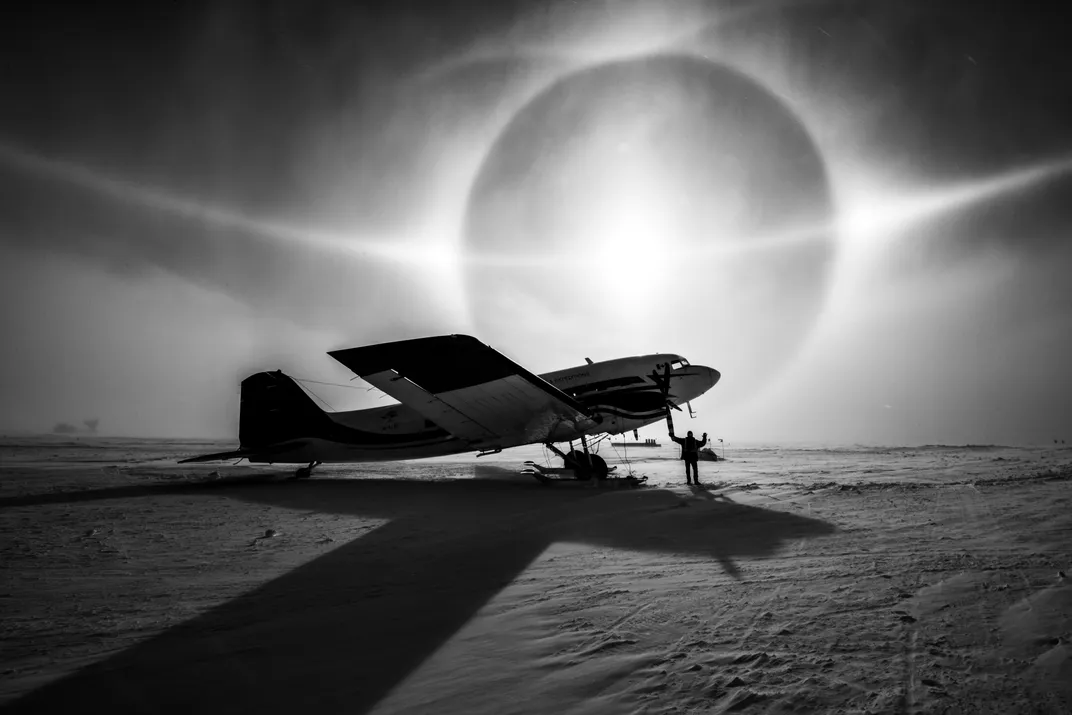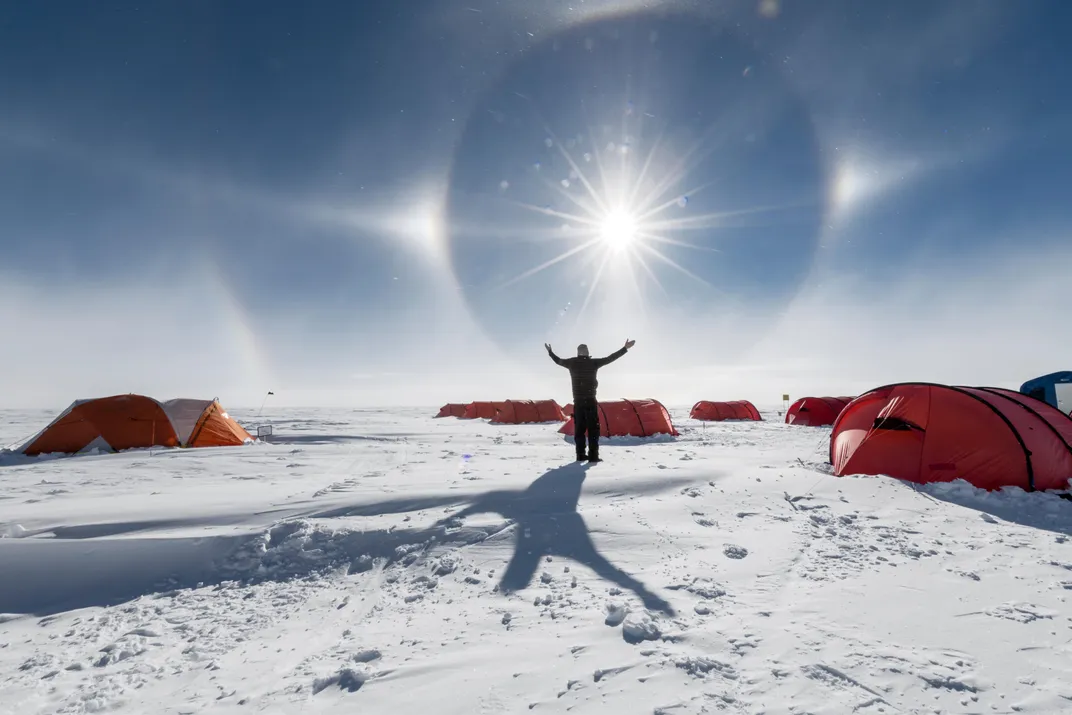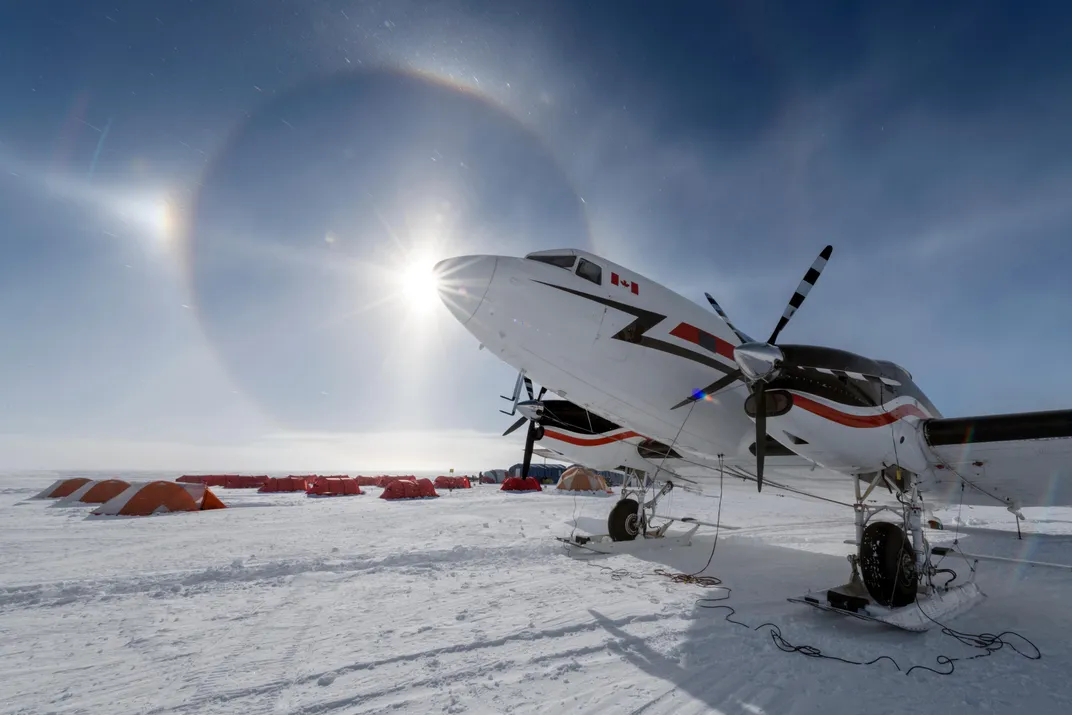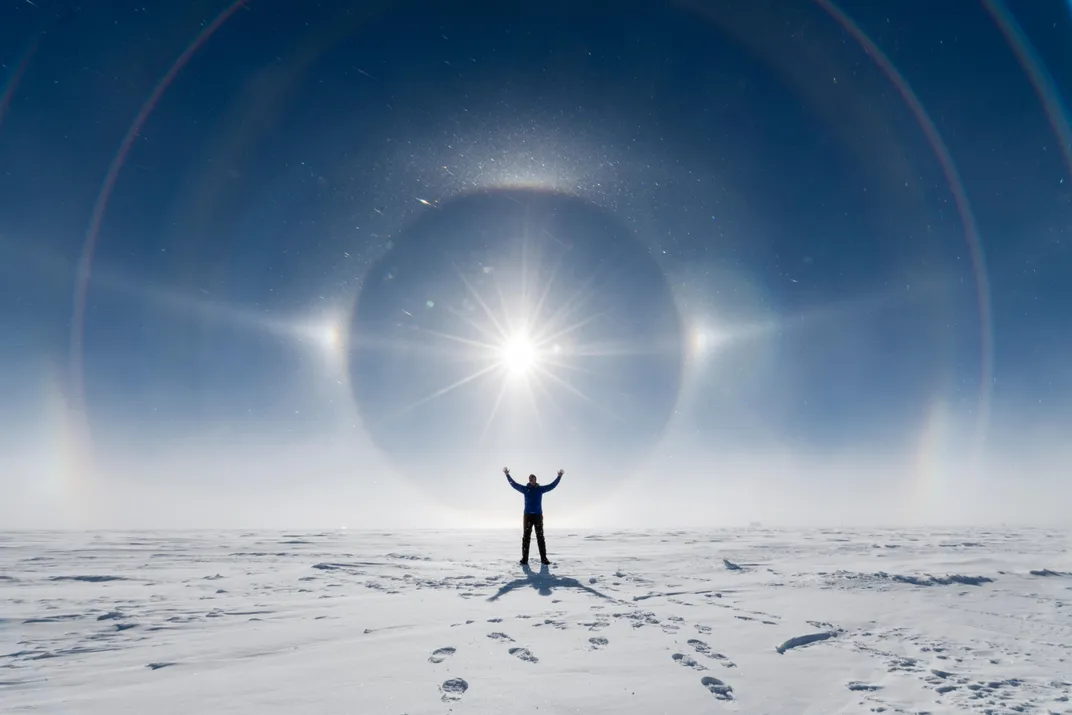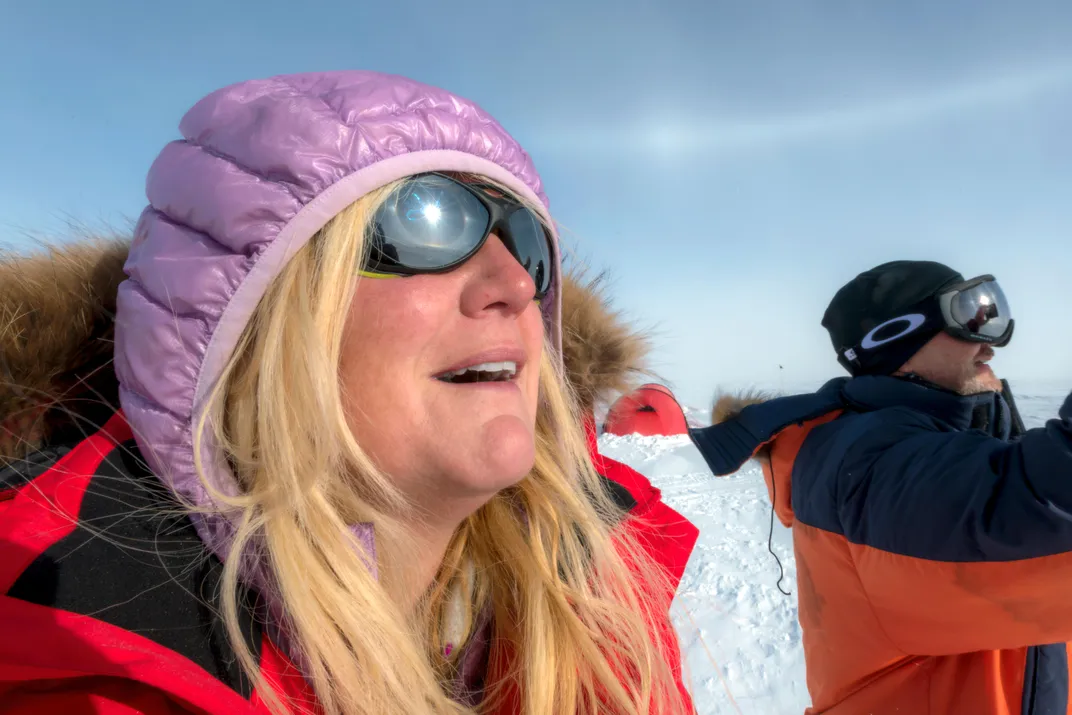How the Antarctic Sun Creates Breathtaking Optical Effects
A fine haze of ice particles transformed this landscape into an otherworldly scene
/https://tf-cmsv2-smithsonianmag-media.s3.amazonaws.com/filer/cb/c5/cbc55830-2da5-49ff-add3-8804ba7ac305/south_pole_-1-4-18076340.jpg)
On January 4, 2018, the sun, ice, and air conspired over Antarctica to create a glowing halo, a gorgeous lesson in physics written across the sky.
Luckily, photojournalist Christopher Michel was on site and captured the otherworldly view for all to see, Brian Kahn reports for Earther. Although the image almost looks faked, it's completely real, and there's a lot of science behind this spectacular consequence of optics.
The key to the effect is the formation of ice crystals in the sky. If there's lots of moisture, the ice crystals will continue to grow until they eventually fall to Earth as snow. But if it's relatively dry, the tiny crystals will remain suspended in the atmosphere, commonly hanging out in wispy cirrus clouds thousands of feet up. Ice crystals can also form lower down, either hugging the ground in ice fogs or slowly drifting to Earth as diamond dust.
Like raindrops scattering light to create a rainbow, ice crystals can split light into arcs and halos. The size, shape and orientation of ice crystals all affect the types of halos that form.
In the picture above, a bright white halo surrounds the sun, sitting 22 degrees from the glowing orb. Aptly named a 22 degree halo, the effect occurs when light travels through hexagonal prism ice crystals, which looks like tiny hexagonal columns. When light travels parallel to the crystal face, it's bent as it exits the prism. The result is a large circle of light surrounding the sun, its radius roughly equal to the distance between pinky and thumb of a splayed hand at the end of an outstretched arm.
But this picture also holds another interesting effect: sun dogs. These flares of light appear to the left and right of the glowing halo and look like miniature echoes of the sun. They sit at the same 22 degrees away from the sun as the halo, but are created by the deflection of light through hexagonal plates (rather than columns) of ice. They can appear have colored tints, and despite their name, can also show up at night to create faint echoes of the moon.
Another arc of light swoops through the center of the image, crossing the sun and sun dogs. The glowing slash, known as a parhelic circle, often only shows up in segments, but sometimes can present as a full circle in the sky. Parhelic circles come from light reflecting off near-vertical faces of ice crystals.
The 22 degree arc also seems to be wearing another bright smudge as a hat. This wing-shaped bit of brightness is a tangent arc, which is created when light passes through the horizontal sides of a crystal. Atop the tangent is another halo known as a Parry arc, a phenomenon first described during Sir William Edward Parry Arctic 1820 expedition to search for the Northwest Passage. These more rare phenomena are created when light travels through ends and sloping faces of ice crystals that are nearly horizontal. The ice acts as a prism, splitting light into a rainbow.
Together, the halos create a wondrous light show. It's neat to look at, but even cooler to understand how it forms.
